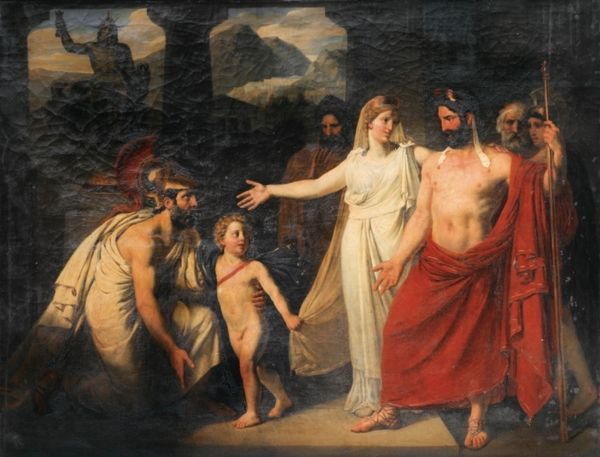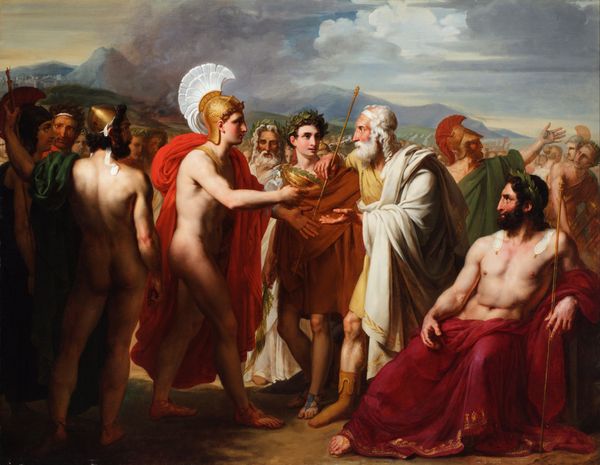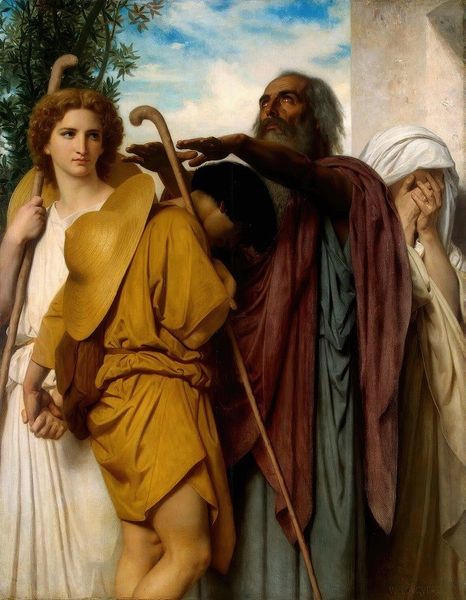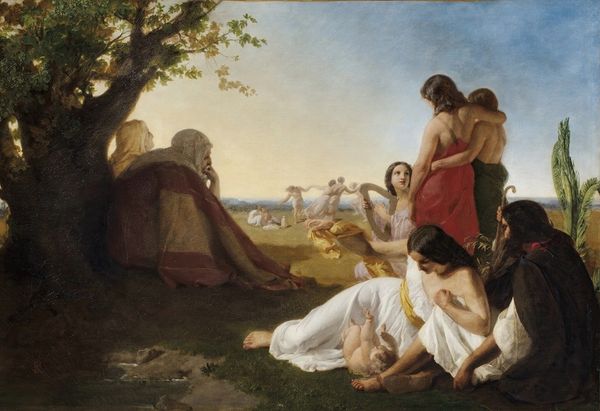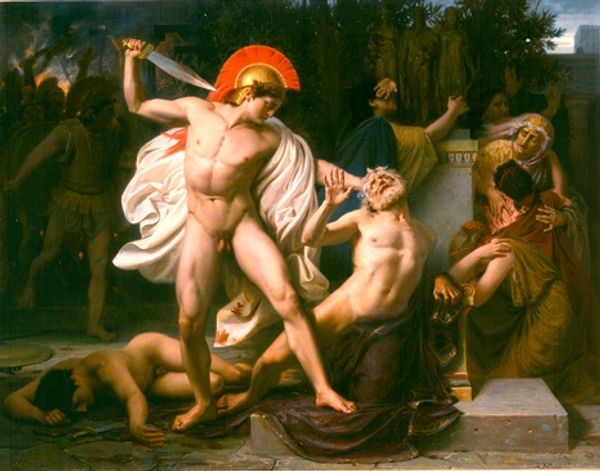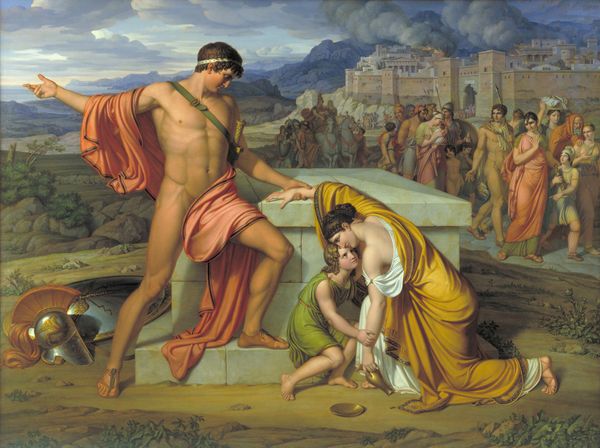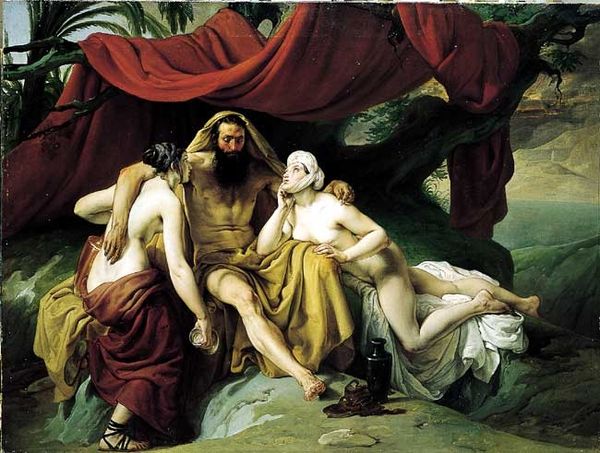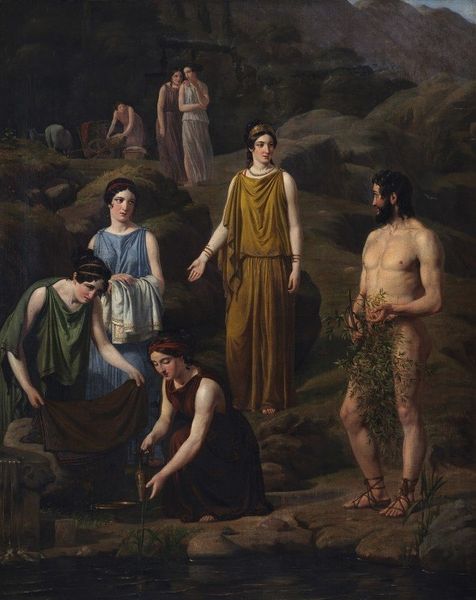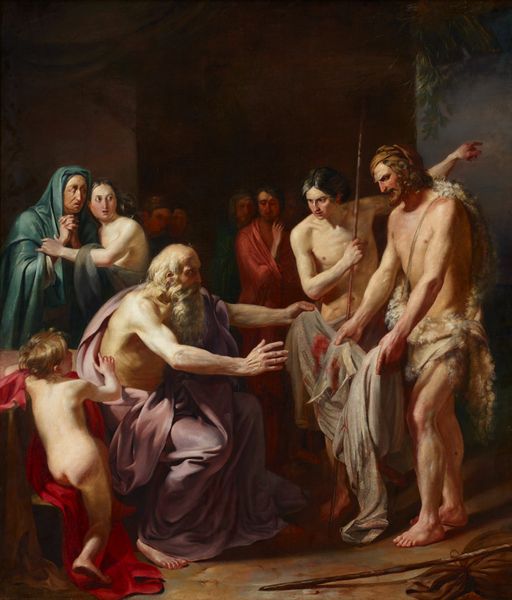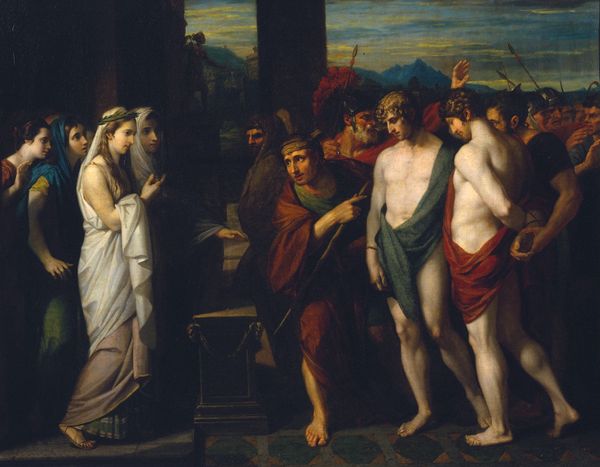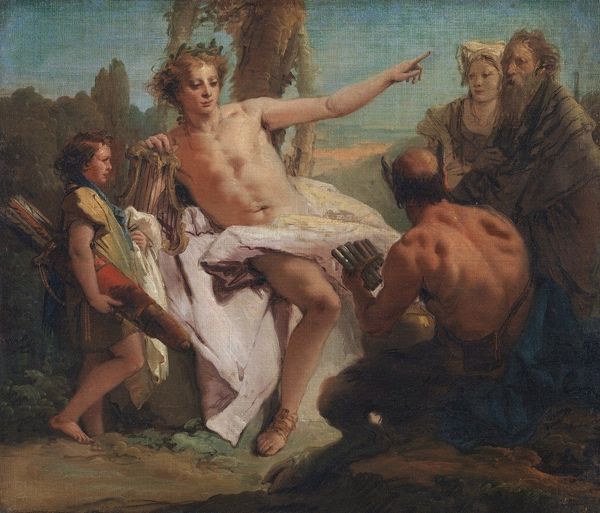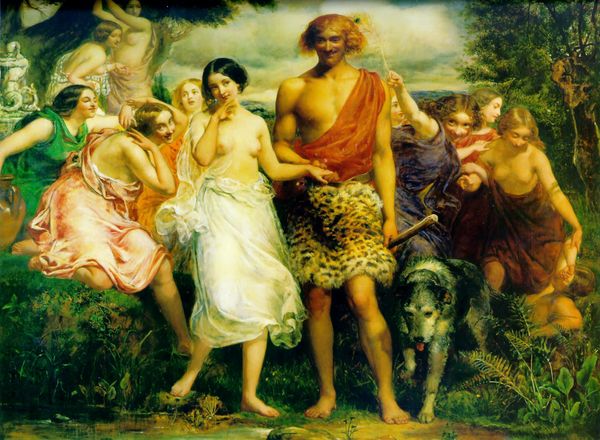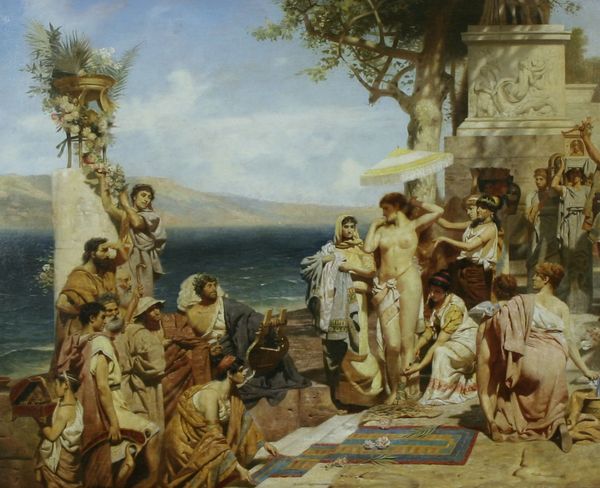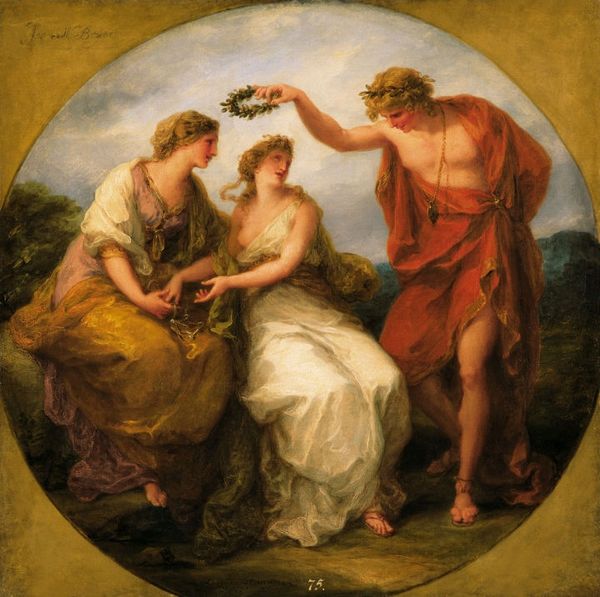
painting, oil-paint
#
allegory
#
painting
#
oil-paint
#
landscape
#
figuration
#
oil painting
#
romanticism
#
france
#
history-painting
#
nude
#
portrait art
Dimensions: 116 x 99 in. (294.6 x 251.5 cm)
Copyright: Public Domain
Raymond Auguste Quinsac Monvoisin created "Telemachus and Eucharis" with oil on canvas. The painting presents a scene of classical composure. The figures are arranged in a balanced, almost symmetrical design, echoing the aesthetic principles of Neoclassicism. Eucharis sits, draped in white, her posture suggesting a thoughtful melancholy. Telemachus, stands nearly nude, draped in gold fabric, drawing the eye with his youthful form. The color palette, dominated by soft tones of white, gold, and terracotta, contributes to the artwork's overall serene and idealized atmosphere. Monvoisin's piece engages with the formal ideals of beauty, harmony, and proportion that were central to the Neoclassical movement. The figures and setting evoke a sense of timelessness, yet the composition seems to question fixed roles and conventional relationships. The gestures, the interplay of gazes, and the arrangement of bodies create a field of tension that challenges the observer to consider these characters within broader themes of desire, duty, and transformation. Consider how the artist uses color to create emotional resonance. It functions not just aesthetically but as a part of a larger cultural and philosophical discourse.
Comments
minneapolisinstituteofart almost 2 years ago
⋮
Shipwrecked on a Greek isle, Telemachus (center), son of Odysseus, and Eucharis (left), a nymph on the island, fell in love. Monvoisin's painting depicts the young lovers bidding farewell. Athena intervened to make this happen, disguising herself as Telemachus's guardian Mentor (right) and forcing the young man to abandon his beloved to search for his lost father. The scene comes from François Fénelon's 1699 novel "Les Aventures de Télémaque" (The Adventures of Telemachus), inspired by characters in Homer's epic poem the "Odyssey." Commissioned by the future king of France, Louis-Philippe (reign 1830–48), the painting was executed by Monvoisin in Rome (note the city is inscribed next to the artist’s signature). Monvoisin spent five years in Italy (1820–25) after being awarded second place in the French Academy's prestigious Prix de Rome. The painting was exhibited at the 1827 Paris Salon, where Louis Philippe, then the duc d'Orléans, was listed as the lender.
Join the conversation
Join millions of artists and users on Artera today and experience the ultimate creative platform.
